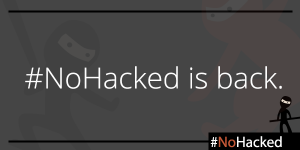Educating yourself about thought leadership is a curious experience. While you can easily find countless posts emphasizing the importance of establishing yourself as a thought leader in your industry to aid your marketing efforts, few tutorials actually outline specific ways in which you can accomplish that goal.
Too often, articles stop at the why, without delving into the how – a crucial oversight for marketers who are trying to be thought leaders in their own right. So we’re here to change that! To make sure your thought leadership efforts are not a waste of money and actually benefit your business, consider one of your most favorable resources: your own employees and co-workers.
Employees As Experts
If you have built your business the right way, your employees are already experts in what they do. More than any marketer who seeks way to promote a business, they know the ins and outs of their job, and likely of their industry as well.
Why should a higher education marketer seek to promote herself as a thought leader if the faculty members, thanks to years of study and research, know so much more about relevant topics? Should a fashion marketer really try to write about the newest fashion trends, when front line employees and inventory purchase agents know so much more about what sells well, and what’s up and coming?
More likely than not, your employees do what they do because of some interest in the field. And over years of working in their position, they have developed an understanding of your industry that is more customer-oriented and goes into more depth than any marketer ever could. So it’s time to start putting this invaluable resource to good use in your thought leadership efforts.
Establishing Thought Leadership Committees
The most straightforward way to turn thought leadership marketing into a collaborative effort is to establish thought leadership teams and committees. These committees can help you brainstorm topics that potential customers might be interested in, as well as outline the specific strategy of publishing your content and reaching your customers.
Ideally, your committee should include everyone involved in the marketing process, as well as the employees that know most about the topic in which you want to establish your brand as a thought leader.
Going Beyond Committees
Committees are a great start in authenticating your thought leadership efforts. But for true success, consider involving your internal experts directly in your content strategy. You can do that in a variety of ways:
- Co-host a webinar. In most cases, your experts will not be experienced marketers, and may not be comfortable public speakers. Co-hosting a webinar about your employee’s topic of expertise allows you to steer the ship while showcasing your employee’s expertise.
- Guest Blogging. Who usually publishes on your business blog? More likely than not, the publishers will consist of two to three authors at most. Broadening the scope not only allows you to avoid your blog becoming stale and predictable, it also builds credibility by letting you branch out into specific topics of expertise, covered by an authentic expert in that field. You can still act as an editor to ensure the content does not contradict your brand voice, but be sure that the expert’s unique voice shines through for added credibility.
- Video Q&A. As video continues to flex its muscles in the digital marketing space, why not branch out from the typical, promotional 30-second clips you see anywhere? A Q&A means giving your experts valuable face time, establishing in the minds of your audience that thought leadership in your business comes directly from your employees. You can even include shots of the employee at work, further increasing his or her credibility.
Consider this example: you’re small ad tech company looking to sell your new Facebook analytics solution to small business marketers. Establishing thought leadership in this scenario means having to convince marketers that you know as much (if not more) about the digital advertising environment than they do – a difficult proposition.
But you know who just might know most about the way Facebook rates ads and bids? Your developers – the people who established your software to be optimized for that environment. So why not get them involved in a webinar, writing a guest blog, or in front of the camera to share their thoughts on the backend of Facebook? In doing so, you will establish your company as one that knows the backend of Facebook inside out, making you the perfect vendor for your analytics solution.
The Value Of Showcasing Employees
As you probably know, you can use a variety of tactics to establish credibility in the eyes of your audience. While most content marketers generally choose leadership credibility as their preferred method, it’s far from the only possibility.
In fact, depending on your industry, your audience may actually prefer peer credibility, learning about your company and its thought leadership from someone they perceive to be on a similar level as themselves. Couple that with the fact that your employees are possibly your most valuable resource for industry expertise, and including your internal experts in your thought leadership marketing efforts makes inherent sense.
Are you looking for guidance in establishing yourself and your brand as a thought leader? The possibilities can come from unexpected sources. You may not think about your salespeople or shipping processors as a resource to establish thought leadership but in reality, their knowledge and willingness to share that knowledge could be just what you need to get your content marketing efforts off the ground.
Business & Finance Articles on Business 2 Community(95)
Report Post




